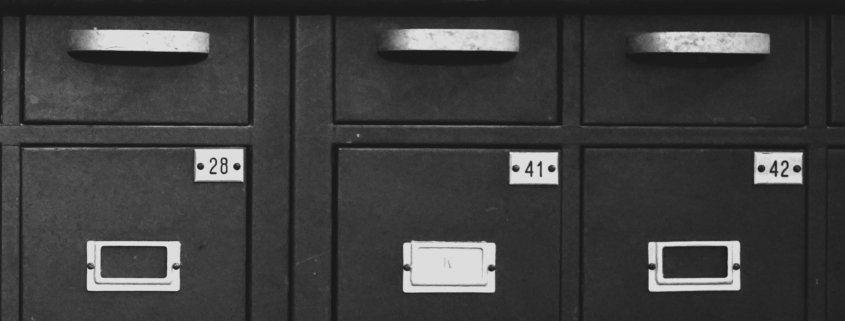Prior Publication Does Not Always Bar Trade Secret Protection
Does a published algorithm bar trade secret protection of that algorithm? The answer is not as simple as it seems. Earlier this year, the Federal Circuit in Masimo Corp. held that the prior publication by a third party of trade secret information does not bar trade secret information. Masimo Corp. v. True Wearables, Inc., No. 2021-2146, 2022 U.S. App. LEXIS 1923, at *17 (Fed. Cir. Jan. 24, 2022). This seems counter intuitive given that one of the requirements of a protectable trade secret is that the information to be protected is not generally known to the public. 18 U.S.C. § 1839; Cal Civ Code § 3426.1.
This blog will explore the topic of whether prior publication of information by a third party bars trade secret protection.
I recently posted a blog article about where I discussed the laws around trade secrets generally. To recap:
Trade secrets are defined under 18 U.S.C. § 1839[1] and Cal Civ Code § 3426.1[2]. Boiled down, three things must be true for the information you seek to protect:
- Derives independent economic value;
- Not generally known to the public;
- Reasonable measures were taken to keep the information secret.
Case Background
In Masimo Corp., Masimo Corporation and Ceracor Labortories, Inc. (collectively, “Masimo”) sued True Wearables, Inc. (“True Wearables”) and Dr. Marcelo Lamego for trade secret misappropriation. Specifically, Masimo alleged that Dr. Lamego misappropriated the trade secret known as “TSS”. TSS is related to Masimo’s proprietary algorithm used to solve optimization problems surrounding oximeters[3]. Masimo’s TSS uses a simple linear algebraic equation: “SpHb = Ax + By + Cz . . .,” where x, y, and z are absorption measurements (e.g., wavelength readouts) from the oximeter and A, B, and C are coefficients which relay important information to the user. Masimo Corp. at 2.
Dr. Lamego was employed at Ceracor Laboratories, Inc. before leaving and founding True Wearables. Id. at 3. Dr. Lamego the “Oxxiom device” and later received a notice of allowance for a patent for the Oxxiom device. Id. Masimo sued True Wearables in district court, moving for preliminary injunction on trade secret claims arguing that the provisional application upon which the nonprovisional application claims priority[4] disclosed a variation of the TSS algorithm, which would eventually become public knowledge. Id.
The district court followed CUTSA definition of a trade secret mentioned above. True Wearables argued that the TSS algorithm was “generally known” by the public because it was previously published in a conference paper by the Institute of Electrical and Electronics Engineers (“IEEE”). Id. at 7. Specifically, the IEEE paper disclosed “an algorithm equivalent to the TSS and that has been cited over 1,200 times.” Id. True Wearables also presented expert testimony stating that “variants of the TSS have appeared in statistics textbooks since the early 1960s” and “an algorithm equivalent to the TSS was ‘widely known and widely used by the statistics community’” prior to the lawsuit. Id. at 8. The district court ruled that at best, the publications could be a basis for determining that the TSS was readily ascertainable. Id. (citing Masimo Corp. v. True Wearables, Inc., No. SACV 18-2001 JVS (JDEx), 2021 U.S. Dist. LEXIS 88038, at *13 (C.D. Cal. Apr. 28, 2021)).
Analysis
Although True Wearables cited various cases that “display in a single publication of an alleged trade secret in its entirety is conclusive evidence that it is generally known”, the Federal Circuit found those cases to be distinguishable because the cited cases involved either (a) disclosure in an unrelated field or (b) disclosure was authorized by the owner of the trade secret thereby extinguishing trade secret protection. Masimo Corp. at 10. The Federal Circuit stated that the mere fact that the trade secret has been published “does not necessarily compel a finding that the information cannot maintain its status as a trade secret for a party in an entirely different field from the one to which the publication was addressed.” Id. at 12.
The true downfall for True Wearables’ argument was that the algorithm or variants of the algorithm were published to the statistics community, which the Federal Circuit deemed to be far enough removed to be considered unrelated to the medical field. Just because those in the statistics community were aware of the algorithm does not necessarily mean that the algorithm would be generally known by “entities who develop noninvasive blood content detectors” such that said entities could derive economic value from the disclosure. Id. at 13. For example, if the algorithm was disclosed to the healthcare community at large, True Wearables may have had a stronger argument that TSS was “generally known.” However, the Federal Circuit found this to not be the case.
Takeaway
Although the case is ongoing, the distinction in whether “publication” is damning towards trade secret protection is worth noting. Here, the inquiry shifted to whether the publication in an unrelated field is far enough removed such that those in the relevant field would not be able to obtain economic benefit of the disclosure. While the Masimo Corp. ruling might seem surprising on its face, the Federal Circuit’s line of reasoning is not completely unfamiliar. Interestingly enough, the logic here—although not completely parallel—seems to be consistent with the rules around other areas of intellectual property. For instance, two trademarks can exist simultaneously in unrelated fields. Also, a patent publication is not prima facie prior art if the publication exists in an unrelated field and there is no motivation to combine. At the end of the day, the Federal Circuit is affirming its stance that determinations of the prongs of trade secret protection is fact intensive as seen in Masimo Corp. It is important to note that despite the preliminary injunction granted in favor of Masimo, True Wearables may still succeed on the merits as the case moves forward. Masimo Corp. is certainly a case worth keeping an eye on.
[1] (3) the term “trade secret” means all forms and types of financial, business, scientific, technical, economic, or engineering information, including patterns, plans, compilations, program devices, formulas, designs, prototypes, methods, techniques, processes, procedures, programs, or codes, whether tangible or intangible, and whether or how stored, compiled, or memorialized physically, electronically, graphically, photographically, or in writing if—(A) the owner thereof has taken reasonable measures to keep such information secret; and (B) the information derives independent economic value, actual or potential, from not being generally known to, and not being readily ascertainable through proper means by, another person who can obtain economic value from the disclosure or use of the information.
[2] According to the California Trade Secrets Act (“CUTSA”) (d) “Trade secret” means information, including a formula, pattern, compilation, program, device, method, technique, or process, that: (1) Derives independent economic value, actual or potential, from not being generally known to the public or to other persons who can obtain economic value from its disclosure or use; and (2) Is the subject of efforts that are reasonable under the circumstances to maintain its secrecy.
[3] Without going into the specifics, oximeters are basically LED emitting fingertip sensors used to measure the concentration of total hemoglobin, i.e., blood oxygen levels, in a patient.
[4] Fun fact: a provisional application allows applicants to basically make adjustments to the application for one year while securing an earlier filing date. Applicants can then file a nonprovisional application—which is more or less the completed version of the provisional application—and claim the benefit or “priority” of the earlier filing date of provisional application. In other words, the nonprovisional application would then be considered to have been filed at on the date the provisional application was filed. The priority/filing date is important because the U.S. moved from a “first to invent” filing system to a “first to file” system. This means that whoever files first rather than invents first will generally be awarded the patent. For example, if two applicants filed a patent application for the same or similar invention, the applicant with the earlier filing date will generally be the one to be awarded the patent.






